 
Norba Ki-12 / Ki-12W and Ki-15
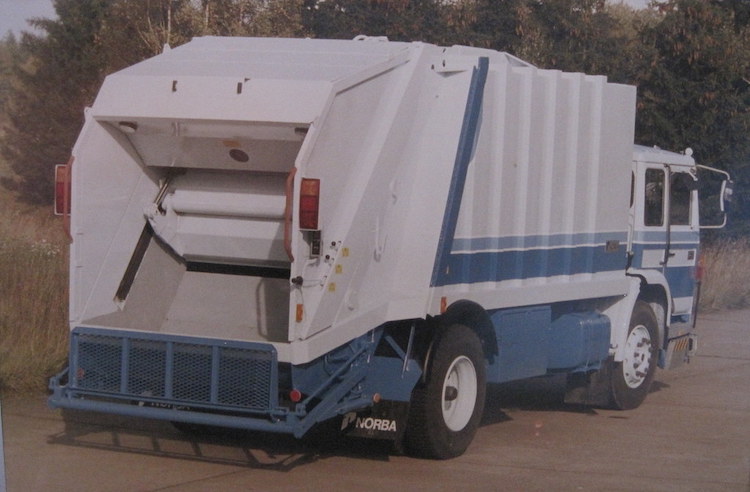
The Norba Ki-12 rear loader
As the Norba Ki-11 was rising in popularity in both domestic and foreign markets, Norba launched another rear loader model. It was designated the Ki-12, and was essentially a smaller version of the KI-11. This model was probably intended to exclusively collect household refuse, or other types of lighter recyclables. The body was available both as a full-width version, and as a narrower version to increase maneuverability. They were also available with different body heights.
The packer was a traditional slide/sweep-compactor, with the cylinders mounted in-line, just like on the Ki-11. But there were some significant differences: The slide cylinders were concealed inside the slide panel, which was basically shaped like a "thin box", with two openings at the top end through which the cylinders extended. Access to the lower connection points for the cylinders was provided by removable covers on the rear face of the panel. The packer was also narrower than on the Ki-11, and this was the case on both the narrow and the full-width versions of the Ki-12. The packer plate size from hinge center to blade edge was also significantly smaller, with only 550mm on Ki-12 instead of 650mm on Ki-11. Cylinders were also smaller than on its larger sibling, decreasing the length of the tailgate as well. Combined with the narrow design, this was intended to increase maneuverability.

Norba Ki-12 with access panel removed, showing concealed slide cylinder
The tailgate was opened in an unconventional manner, compared to most rear loaders. The tailgate lift cylinders were placed on the roof of the body, pulling link arms to elevate the tailgate. The link arms initially lift the whole tailgate upward, releasing it from the locking hooks at the bottom end of the body, then swinging it back and upward. Although the cylinders are weaker when pulling, the geometry of the link arm assembly resulted in maximum force, when the tailgate centre of gravity was as far away from the hinge axle as possible. The main advantage of this system is that the cylinders cannot come in contact with the refuse as it is ejected from the body, reducing the risk of damage. The same system can be seen today, both on the Dennis Phoenix II rear loaders, and the Joab rear loaders.
A few years after the Ki-12 was released, a second version was offered which was essentially the same, but the hopper opening was wider to allow emptying of large containers. It was named
Ki-12W, where the "W" probably stands for "Wide". The packer however, retained the same narrow dimensions as the original, and the transition in width was achieved by having "slopes" on the sides behind the packer slide trackways. Lifting of the containers was performed with a wire winch. It is unknown why Norba offered this model, as the Ki-11 was already covering this market segment. A theory is that there was a demand for a lighter, although full-sized body, that was still able to perform the same duties as the heavier Ki-11.
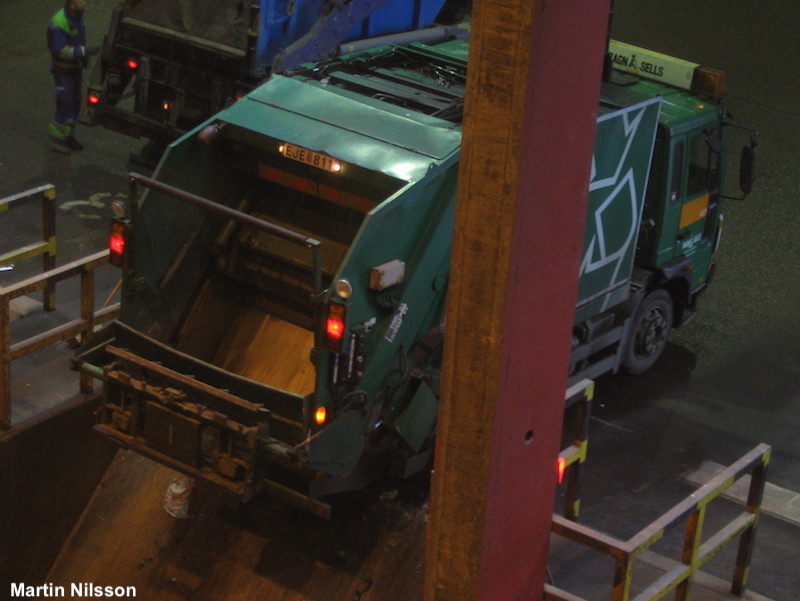
Mini Ki-12 at a transfer station pit; note the roof-mounted tailgate cylinder
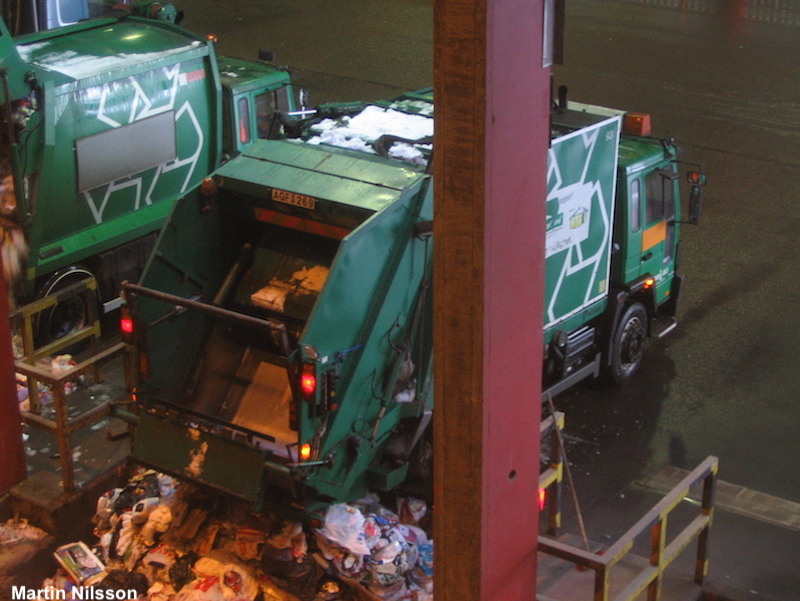
Same view of a similar truck; note how cylinder has retracted, pulling link-arm and unlocking the tailgate
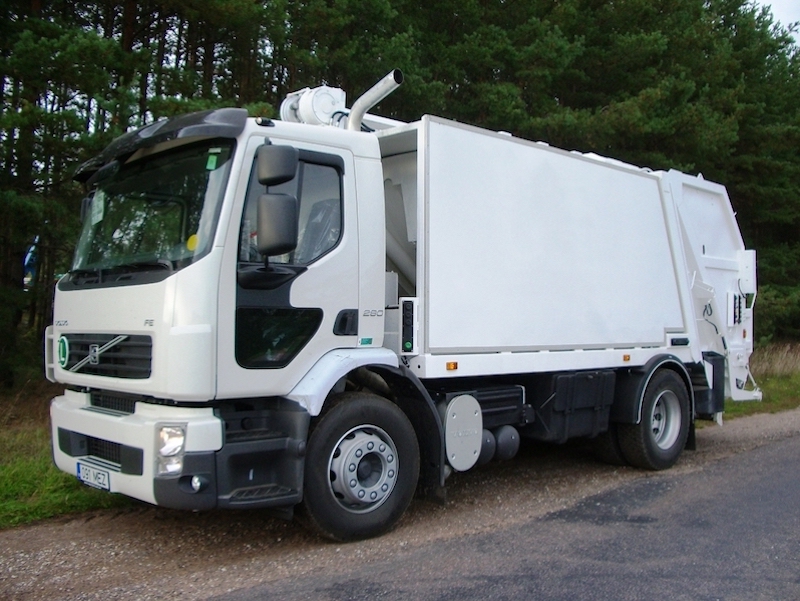
Ki-12W 'Wide Hopper' had the same hopper opening width as the heavier Ki-11
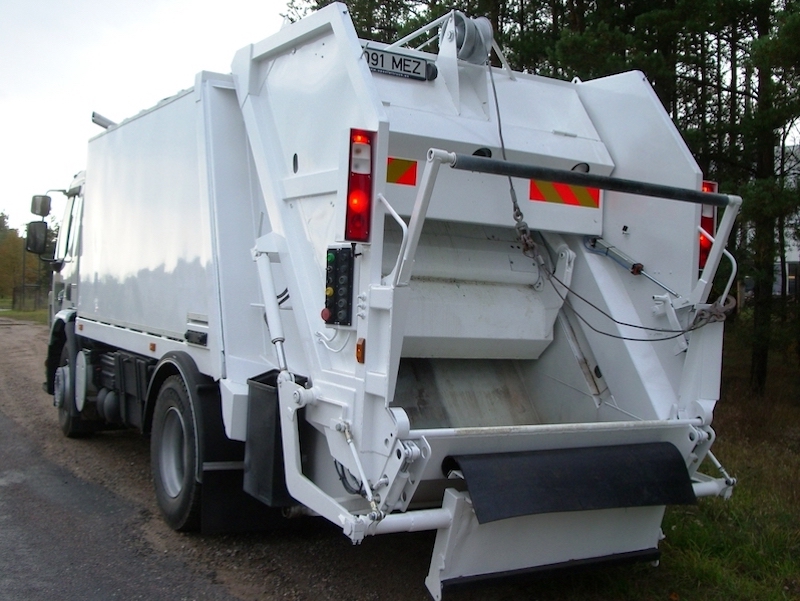
Ki-12W achieved wider opening by flairing and sloping the sidewalls behind the tracks of the standard Ki-12 blade
Early Norba Multi-Faction Bodies
In the 90s, public opinion tilted towards recycling and waste sorting, and Norba was quick to recognize and adapt to this trend. Several different products were launched to meet the demands, including a split version of the Ki-12. The body was divided into two sections at a 40/60 ratio, and a fixed divider wall kept the fractions apart inside the hopper.
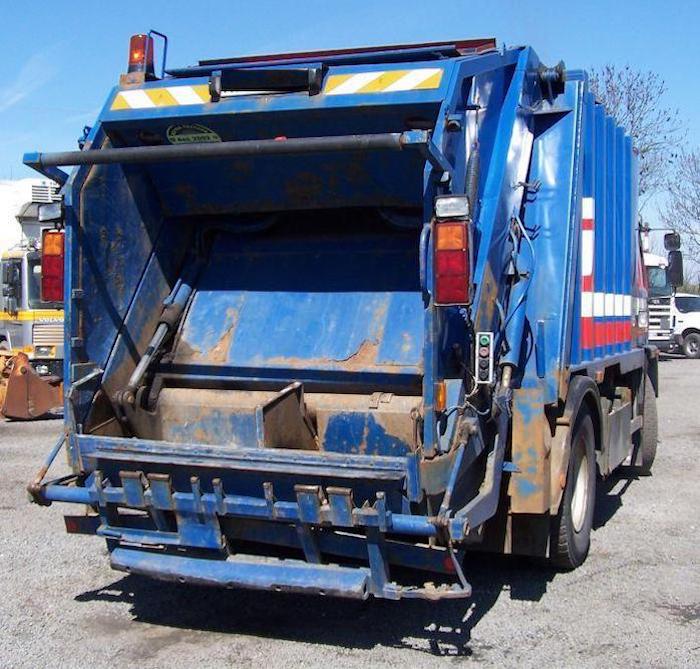
The early split Ki-12, possibly named "MF-2"
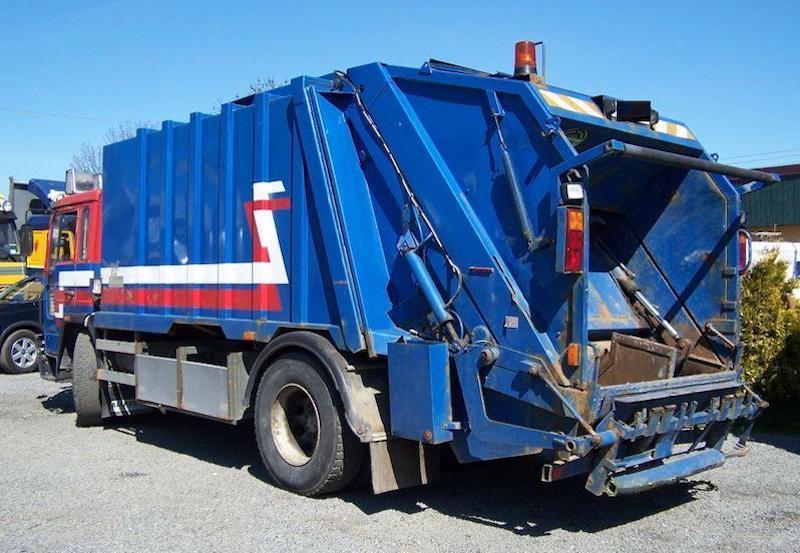
Except for the hopper divider, these were virtually indistinguishable from the Ki-12
Other multi-faction options included non compacting containers placed in front of the main compactor body. They were equipped with side loading lifters, either for bins or with a fixed bucket for hand loading. Special glass recycling bodies were sold as well. They were divided into two equally sized, non-compacting compartments. One for transparent glass, and one for colored glass. Shifting of the load forwards into the body could be achieved by just braking a little harder than usual. This cleared space at the rear, enabling the dumping of more bins. One, or both compartments were emptied by opening one or both of the rear hatches, and tilting the entire body backwards.
Norba Ki-15
The Ki-15 mini rear loader was also introduced during the 1990s, and was intended for really narrow collection routes. The body seems to be a slightly modified version of the Wayne Tomcat mini RL. It had "reversed" sweep cylinders, in that the rod ends were attached to slide, the opposite of the American version. The slide cylinders were positioned outside the tailgate, connecting to the slide panel just above the tracks. Norba probably felt no need to reverse these, since they were already isolated from any contact with the load. The geometry of the packer resulted in a slight "pre-compaction effect" against the front face of the hopper floor. It was typically used with a comb-type lifter, for European-type bins.
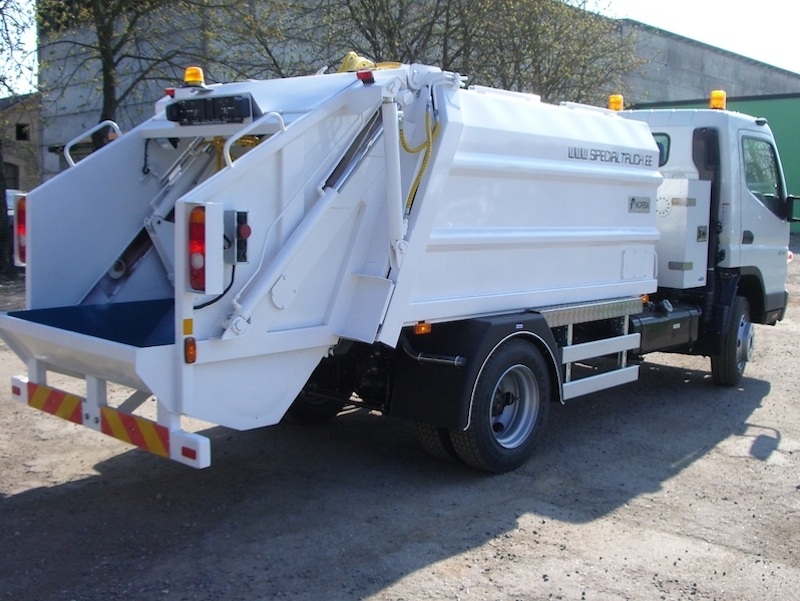
Ki-15 packer was based on the Wayne Tomcat; note the 'reversed' sweep panel cylinder
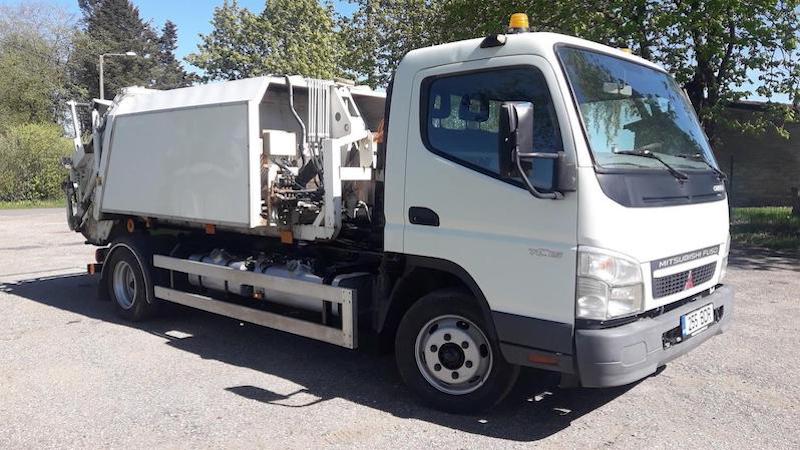
This Ki-15 is a detachable hook lift version
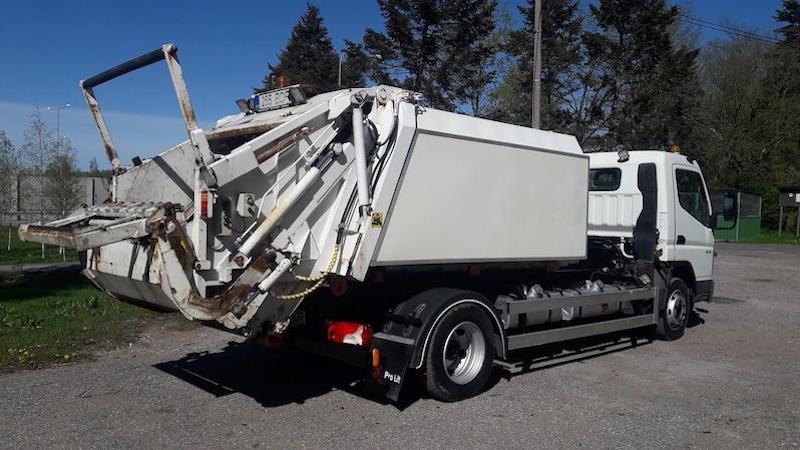
The body slides back in preparation to dis-mount from the chassis



10/13/19
© 2019
All Rights Reserved
Logos shown are the trademarks of respective manufacturers
Photos from factory brochures/trade advertisements except as noted
|
| |